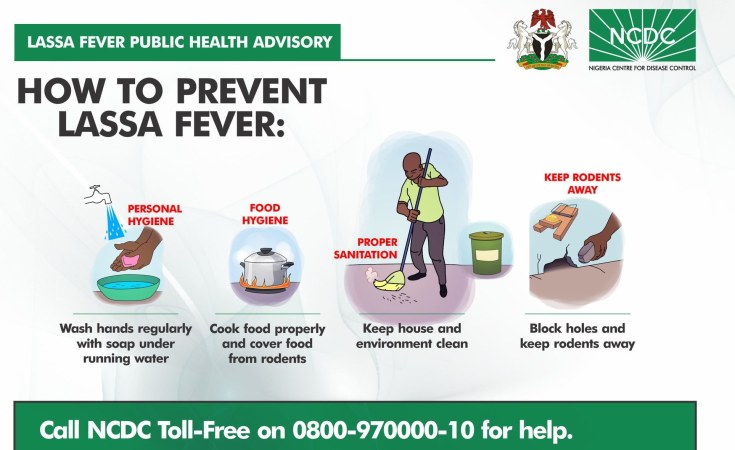The first documented case in the country is reported to have occurred in 1969, and the virus was named after the town of Lassa, Borno State in Nigeria.
As of 2 April, Nigeria has recorded a significant increase in Lassa fever infections and fatalities.
The virus, which has affected about 20 health workers, has killed 148 people between January and April, raising concerns about the current situation of the disease in Nigeria.
According to the Nigeria Centre for Disease Control (NCDC), from week 1 to week 13, 846 confirmed infections and 148 deaths were reported with a case fatality rate (CFR) of 17.5 per cent.
However, the CFR is said to be lower than what was recorded for the same period in 2022 which was 19.1 per cent.
NCDC said in total for 2023, "25 states have recorded at least one confirmed case across 99 Local Government Areas", of which 72 per cent of all confirmed cases were reported from Ondo, Edo and Bauchi states.
Of the 72 per cent recorded, NCDC noted that Ondo State accounted for 32 per cent, while Edo and Bauchi states reported 29 and 11 per cent, respectively.
According to the World Health Organisation (WHO), the annual peak of Lassa fever cases is typically observed during the dry season (December-April), adding that the number of infections is expected to rise further until the end of the dry season.
Unlike COVID-19, the Lassa fever awareness rate has been low, as it silently claims lives and affects health workers.
PREMIUM TIMES in this report, therefore, seeks to sensitise the public to what the symptoms are, how it is transmitted, and how Nigerians can stay safe.
About Lassa fever
Lassa fever is a viral haemorrhagic fever that is primarily transmitted to humans via contact with food or household items contaminated with urine or faeces from Mastomys rats.
Mastomys rat, commonly known as "multimammate rat" is the natural reservoir or host of the virus. Although, other rodents have also been identified to carry the virus.
Apart from Nigeria, the disease is also said to be endemic in other parts of West Africa including Sierra Leone, Liberia and Guinea.
The first documented case in the country is reported to have occurred in 1969 and the virus was named after the town of Lassa, Borno State in Nigeria.
Symptoms
According to the NCDC, Lassa fever presents initially like any other illness such as malaria.
Its symptoms include fever, headache, sore throat, general body weakness, cough, nausea, vomiting, diarrhoea, muscle pains, chest pain, and in severe cases, unexplainable bleeding from ears, eyes, nose, mouth and other body openings.
The CDC explained on its website that the time between infection and the appearance of symptoms of the disease is three to 21 days.
People most at risk
The disease control centre has explained that people of all age groups who come in contact with the urine, faeces, saliva or blood of rats are mostly at risk of Lassa fever.
It added specifically that people living in rat-infested environments, consuming potentially contaminated foodstuff or processing rodents for consumption have higher chances of coming in contact with the infectious disease.
NCDC also noted that doctors, nurses and other hospital staff without appropriate precautions also have higher chances of contracting the virus.
Prevention
To reduce the risk of Lassa fever, the NCDC offers the following guidelines:
·Ensuring proper environmental sanitation by keeping environments clean at all times.
·Covering dustbins and disposing of refuse properly: NCDC advised that communities should set up dump sites very far from their homes to reduce the chances of having rodents within homes.
·Storing foodstuff such as rice, garri, beans, corn/maize, among others, in containers which are well covered with tight-fitting lids.
*Avoiding drying food stuff outside on the floor, or roadside where it will be exposed to contamination is important.
*Eliminating rats in homes and communities by setting rat traps and other means.
*Practicing good personal hygiene by frequently washing hands with soap under running water /or use of hand sanitisers when appropriate.
*Visiting nearest health facilities after noticing any of the signs and symptoms of Lassa fever as listed above, and avoiding self-medication.
*Healthcare workers are also advised to practice standard precautions at all times: such as wearing of gloves while handling patients or providing care to an ill patient/relative.


